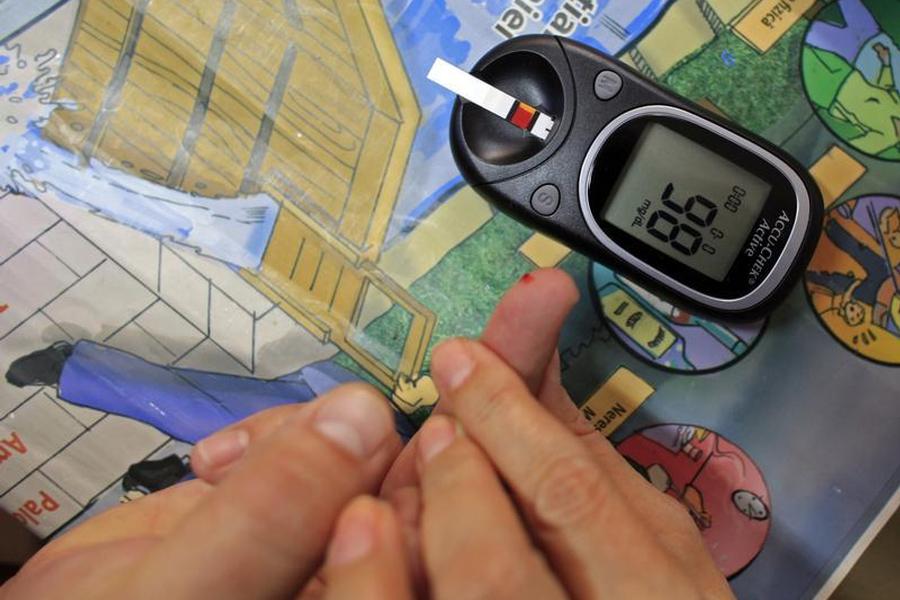Millions have prediabetes and don’t know it. Here is why it’s important to find out and act to lower your diabetes risk. An estimated one out of three American adults is prediabetic, which means blood sugar levels are higher than normal but below the threshold for type 2 diabetes. Yet 90% of these people do not realize they are in this dangerous gray zone.
“You are not going to have symptoms for prediabetes,” says Dr. David Nathan, director of the Harvard-affiliated Massachusetts General Hospital Diabetes Center. “Instead, you or your doctor should determine if you have any of the common risk factors, get your blood sugar levels checked to determine if you have prediabetes, and then make the necessary lifestyle changes you need to stop type 2 diabetes from occurring.”
Who is at risk?
The term prediabetes can be somewhat misleading. It does not mean you will get diabetes, but only that you are at high risk. Without taking action, 15% to 30% of those with prediabetes will develop type 2 diabetes within five years, according to the Centers for Disease Control and Prevention (CDC). Type 2 diabetes makes you more vulnerable to heart disease, stroke, blindness, and kidney disease.
Some risk factors for prediabetes you cannot control — for instance, a family history of diabetes and certain ethnic backgrounds, like being African American, Latino, American Indian, Asian American, or Pacific Islander. Also, as you age, insulin secretion — which helps control blood sugar levels — naturally falls, as does your body’s ability to respond to insulin. After age 60, you have about 20% to 35% odds of being prediabetic compared with about 10% for adults younger than 60.
Steps for prevention
While you cannot control your family history, ethnicity, or age, you are not helpless to prevent diabetes if you are prediabetic. The Diabetes Prevention Program — the largest and longest prevention study — recommends that people who are prediabetic can lower their risk by following two guidelines: get more exercise and lose excess weight.
Get moving. There is no special exercise that can lower your risk, but research suggests that you don’t need long and hard workouts to see results.
In fact, a brisk walking program might be enough. A study published online July 15, 2016, by the journal Diabetologia found that among people diagnosed as prediabetic, those who followed a low-quantity, moderate-intensity exercise program — equal to about nine miles of brisk walking per week — lowered their blood sugar levels more than those who did more frequent and vigorous exercise.
“Any type of physical activity contributes to lowering weight and glucose levels, so find something that you enjoy doing on a regular basis,” says Dr. Nathan.
Watch your weight. Excess weight also contributes to lower insulin secretion and response. A study published online Feb. 6, 2017, by BMC Health looked at the relationship between weight and diabetes risk among more than 15,000 men. It found that those with a body mass index (BMI) of 25 to 29.9, which is classified as overweight, were twice as likely to get diabetes compared with normal-weight men. Obese men — those with a BMI of 30 or higher — were five times as likely.
You have a much lower risk of getting diabetes if you maintain a normal, healthy weight — a BMI of 18.5 to 24.9. In fact, losing 5% to 7% of your body weight, which would be 10 to 14 pounds for a 200-pound man, can help delay or prevent type 2 diabetes, according to the CDC. “The lower your BMI, the better,” says Dr. Nathan. “Even a healthy BMI of 22 will lower your risk more than a BMI of 24.”
While exercise can help you lose weight, a healthy diet is also key. There is no single type of diet that uniquely lowers your diabetes risk, adds Dr. Nathan. “The standard advice to eat a healthy, balanced diet remains sound, and the best weight-loss diets are those that you can maintain over time, so that the weight you lose stays off,” he says. Consult with your doctor to review your diet. He or she also can refer you to a dietitian to help create a diet plan you can follow.
Get tested for prediabetes
Everyone over age 45 should be tested for prediabetes, experts say. The simple blood test for glycosylated hemoglobin, or HbA1c, shows what your average blood sugar levels have been over the past three months.
Normal: HbA1c below 5.7%
Prediabetes: 5.7% to 6.4%
Diabetes: 6.5% or higher
(Harvard Men’s Health Watch)
